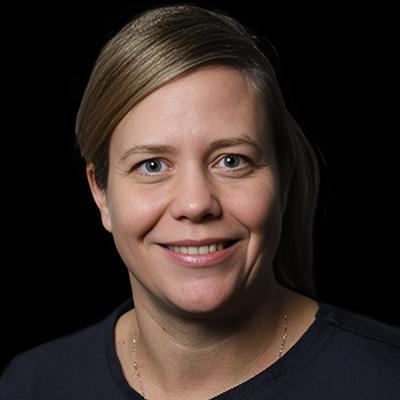
Anja E. Hauser
DRFZ; Germany
Current position
Head of the Immune Dynamics and Intravital Microscopy Laboratory,
Charité Universitätsmedizin and Deutsches Rheuma-Forschungszentrum Berlin
Research Interests
Impact of the microenvironment on immune cells
Deep phenotyping and quantitative spatial analysis of immune cells in tissues
Functional imaging of immune cell dynamics (in vivo and organoids)
Career
Since 2018 Tenured position (W3)
Charité-Universitätsmedizin Berlin, Germany
2012-2018 Professor (W3) for Intravital Microscopy and Immune Dynamics
Charité-Universitätsmedizin Berlin, Germany
2011 Offer for W3 Professorship
Otto von Guericke Universität Magdeburg, Germany, declined
Since 2008 Group leader “Immune Dynamics”
Deutsches Rheuma-Forschungszentrum, Berlin, Germany
2004–2008 Postdoctoral Fellow, Lab of Prof. M. Shlomchik, Department of
Laboratory Medicine and Immunobiology, Yale University School of
Medicine, New Haven, CT, USA
2003-2004 Postdoctoral associate, Humoral Immunology (Prof. R. Manz),
Deutsches Rheuma-Forschungszentrum, Berlin, Germany
2000-2003 PhD student, Freie Universität Berlin and
Deutsches Rheuma-Forschungszentrum, Lab of Prof. R. Manz
Berlin, Germany
Graduation „summa cum laude“
UNIVERSITY STUDIES AND DEGREE
1993–1999 Studies of Veterinary Medicine
Tierärztliche Hochschule Hannover, Germany
Application of functional, multidimensional optical microscopy to analyze the function of myeloid cells during inflammation and bone regeneration
My lab is interested in analyzing immune cells in the tissue context in health and disease. Focusing on bone regeneration after injury, we aim to understand how the tissue microenvironment affects the metabolism of myeloid cells in the bone marrow over time, and how that impacts on their function. We previously demonstrated that CX3CR1+ myeloid cells act as trailblazers for osteogenic type H vessels in the bone marrow. In order to analyze this process in 3D, we developed a tissue clearing, staining and light sheet fluorescence microscopy imaging pipeline called MarShie, optimized to image the entire intact femur at subcellular resolution down to the deepest bone marrow regions. To analyze the three-dimensional dataset, we applied a machine learning approach, enabling us to segment thousands of cells. We show that in aged mice the draining sinus massively decreases in volume while transcortical vessels also decline. We find that during homeostasis CX3CR1+ myeloid cells localize in perivascular niches, whereas CD169+ myeloid cells are dispersed in the parenchyma. After injury, CX3CR1+ myeloid cells relocate and sequester the injury site prior to vascularization. Analysis of the femur after full osteotomy reveals that vessel sprouting is initiated at periosteal regions.
Phenotypes and functions of immune cells are tightly linked to their metabolic profile, which in turn is affected by changes in the tissue microenvironment. We developed longitudinal intravital imaging of the mouse femur, to enable longitudinal micro-endoscopic fluorescence lifetime imaging (FLIM) for metabolic profiling (“MetaFLIMB”). Using our previously developed reference system of enzyme-dependent fluorescence lifetimes derived from the ubiquitous metabolic co-enzymes NADH and NADPH (NAD(P)H), we can determine preferential enzymatic activities in vivo. We stratify enzymatic activities to identify dominant metabolic pathways for energy production. Additionally, we distinguish pathways associated to cellular function and cellular state, i.e. oxidative burst (NADPH oxidase activity) and dormancy or death, indicated by low/no NAD(P)H-dependent enzymatic activity, reflected by an increase in unbound NAD(P)H.
Using MetaFLIMB in osteotomized femurs of mice with red fluorescent myeloid cells, we demonstrate that myeloid cells display highly heterogeneous metabolic profiles both spatially and temporally during bone regeneration. Our results go beyond the binary paradigm of myeloid cells using either glycolytic or oxidative signaling pathways (linked to pro- or anti-inflammatory functions, respectively) derived from in vitro experiments. Under in vivo conditions, myeloid cells with various metabolic profiles, i.e. using other pathways for energy production than the anaerobic pathway associated with pro-inflammatory cells, performed the oxidative burst necessary for the process of phagocytosis. This demonstrates that a high metabolic flexibility of myeloid cells in vivo is related to their functional flexibility. It suggests that myeloid cells, which perform an oxidative burst and are responsible for clearing of debris at early stages after bone injury, and those responsible for vascular or bone remodeling during the later phases, use distinct pathways for energy production.